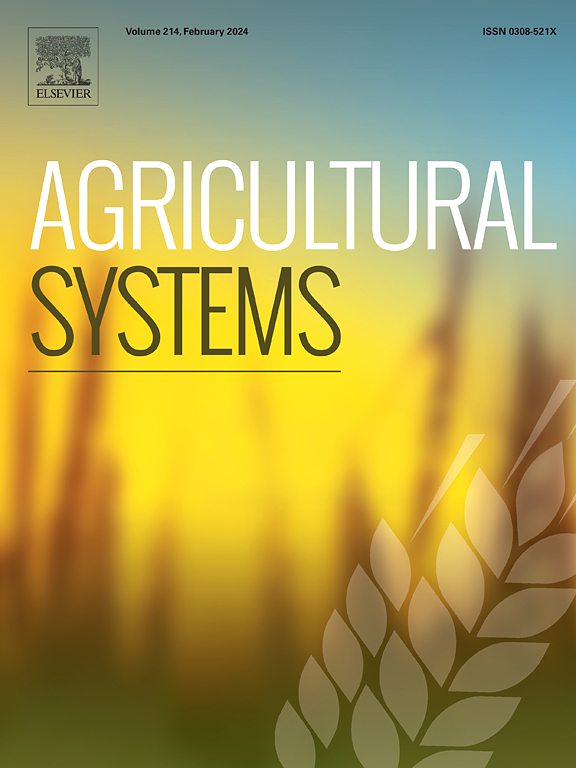Legumes and livestock in no-till crop rotations: Effects on nitrous oxide emissions, carbon sequestration, yield, and wheat protein content
IF 6.1
1区 农林科学
Q1 AGRICULTURE, MULTIDISCIPLINARY
引用次数: 0
Abstract
Context
Crop rotation is seen as a ‘Climate-Smart Agriculture’ practice, but there are knowledge gaps around their climate impacts. This is the first direct measurement of nitrous oxide emissions (N2O) from cropland soils in South Africa.
Objective
Assess the production performance, soil greenhouse gas emissions, and soil carbon sequestration of different crop rotations.
Methods
Continuous measurement over one year of direct soil N2O and methane fluxes and analysis of 20 years of historical data on soil carbon sequestration, yields, fertiliser applications, and wheat (Triticum aestivum) protein content.
Results and conclusions
Rotations that contained legumes and livestock produced higher wheat (3.5–3.6 vs 3.1 t ha−1 year−1) and canola yields (1.5–1.8 vs 1.3 t ha−1 year−1) with superior wheat protein contents, while the cash crop only system's protein content decreased by 0.085 absolute % points annually (compared to 0.01–0.05 %). The results suggest a strong crop rotation legacy effect on the accumulation and availability of nitrogen in the soil profile, for both crop growth and N2O production, where systems which integrated legumes and livestock vs. cash crops only had 0.31–0.42 vs. 0.14 kg N2O-N ha−1 year−1. All systems showed a significant increase of soil organic carbon of 0.24–0.30 Mg C ha−1 year−1 over the 20-year period.
Significance
Legumes and livestock incorporation in crop rotations interact with nitrogen management. Most N2O emissions occurred after precipitation in the otherwise dry summer, making reduction difficult as minimal management activities occur over this fallow period. A significant challenge in designing N2O mitigation strategies is the lack of existing N2O flux datasets needed to develop specific, regional emission factors.
求助全文
约1分钟内获得全文
求助全文
来源期刊

Agricultural Systems
农林科学-农业综合
CiteScore
13.30
自引率
7.60%
发文量
174
审稿时长
30 days
期刊介绍:
Agricultural Systems is an international journal that deals with interactions - among the components of agricultural systems, among hierarchical levels of agricultural systems, between agricultural and other land use systems, and between agricultural systems and their natural, social and economic environments.
The scope includes the development and application of systems analysis methodologies in the following areas:
Systems approaches in the sustainable intensification of agriculture; pathways for sustainable intensification; crop-livestock integration; farm-level resource allocation; quantification of benefits and trade-offs at farm to landscape levels; integrative, participatory and dynamic modelling approaches for qualitative and quantitative assessments of agricultural systems and decision making;
The interactions between agricultural and non-agricultural landscapes; the multiple services of agricultural systems; food security and the environment;
Global change and adaptation science; transformational adaptations as driven by changes in climate, policy, values and attitudes influencing the design of farming systems;
Development and application of farming systems design tools and methods for impact, scenario and case study analysis; managing the complexities of dynamic agricultural systems; innovation systems and multi stakeholder arrangements that support or promote change and (or) inform policy decisions.
 求助内容:
求助内容: 应助结果提醒方式:
应助结果提醒方式:


